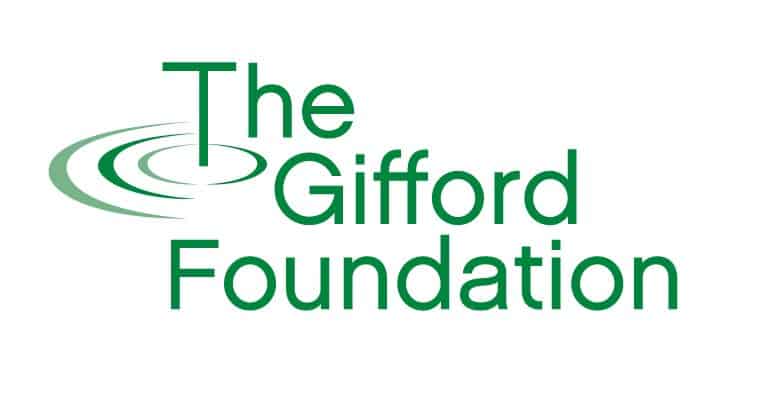Meet the Press: Getting Your Nonprofit In the News
Teri Weaver is the Managing News Producer for The Post-Standard (Syracuse.com) and brings more than 20 years of experience in journalism. Prior to her press career, she worked in public relations and event planning for a Washington D.C. based nonprofit. We discussed how nonprofits can better partner with news agencies to share information and influence public discourse.
Published May 16th, 2023
What do most people misunderstand about the problem your organization is trying to solve? How do the problems your nonprofit addresses affect real people on the ground? What is unique about your organization’s approach to fulfilling its mission? News Producer Teri Weaver says that these are the kinds of stories that the Post-Standard and other news agencies are most interested in. “If you meet your friend for coffee or for a beer, what story would you tell there? That’s the kind of story that we want to write, that we want to tell people about,” she says. “That’s the kind of story that gets shared and can reverberate.”

Teri Weaver is the Managing News Producer for The Post-Standard (Syracuse.com) and brings more than 20 years of experience in journalism.
When nonprofit agencies plan their communications strategy, it often revolves around platforms like social media, website development, and email campaigns which can be structured and organized internally. These resources certainly have their own unique value, but engaging with the news media has the potential to create an impact that cannot be found elsewhere.
Weaver says that too often, the press releases her newsroom receives are event based – such as an upcoming 5K fundraiser run or an update about an Executive Director retiring. She suggests that nonprofits ask themselves, “Would you yourself click on that story even if you weren’t affiliated with the group? Is this the story I would tell a friend at a bar? Is this story big enough that somebody in Binghamton, Albany, or Buffalo would want to read it?” Weaver recommends using real people and real experiences to explain the work your agency does. “Rather than the anniversary story or the annual meeting story, tell us ‘What’s broken in your world, and who is to blame? If we expose that, could it be fixed?’ That’s the kind of story we are often looking for.”
“Is this the story I would tell a friend at a bar?”
News agencies will cover certain “PSAs” around upcoming events or leadership changes, so it can be worth sharing these – just don’t hold your breath. In these cases, Weaver says that having a full press release with quotes, event details, pictures, and contact information can be helpful so they can quickly reprint the announcement. However, more complex stories will always require a journalist to follow up so a more concise and direct pitch is usually more effective. Weaver offers the following tips:
- Make sure that the organization you represent is clearly identified in the subject line or as the sender. (This makes it less likely to get overlooked or accidentally flagged as spam.)
- Pitch your story in the body of the email – not in an attachment. Attachments require an extra step to open, (meaning fewer people will see them), and also present a security risk when coming from an unknown source.
- Make sure that your story is human centered. Even though most nonprofits are tackling abstract problems like lead paint or poverty, these issues are important because of their impact on people’s lives. That is the best place to start when pitching a story.
- Include contact information for the people being impacted by the story. While the journalist investigating the story will likely want to speak to the organization’s leadership, they will especially want to hear from the community members on the ground who are directly involved. Make sure to obtain permission first and alert them ahead of time to expect a call from the press.
- Don’t be afraid to follow up after your first email. Send a second one, and if that doesn’t work – leave a brief voicemail asking to share your story idea.
Weaver says that her newsroom receives lots of announcements from organizations regarding a grant that they were awarded, or an increase in funding from the latest State budget allocations. Although this may be hugely impactful for the agency in question, it is unlikely to be as engaging for the average reader. Instead, consider sharing the story that earned the grant in the first place. What is the systemic problem you are hoping to solve? What is innovative about the approach you are taking? The irony is that those stories were probably already written out in the grant proposal, but they are rarely shared with journalists.
“What is the systemic problem you are hoping to solve? What is innovative about the approach you are taking?”
Like all communications and marketing opportunities, there is a capacity cost to investing time and resources towards pitching the press on stories related to your organization and its work. That said, success in this arena can have far reaching implications:
First, the readership scale is likely to be vastly larger and longer lasting than any internal marketing campaign. This often equates to increases in donations, grant dollars, and overall visibility for your agency. Second, and perhaps most importantly, sharing your organization’s knowledge and perspectives on a given issue with the general public helps influence discourse and shapes community opinion. Over time, this type of advocacy can sway elected officials and alter public policy.
Finally, more consistent interactions with the media can lead to a stronger relationship that benefits both parties: the nonprofit has greater access and influence with news coverage, while the journalist gains a reliable source for information and commentary. “[As a journalist], we wake up one day and have to learn about something we didn’t know about the day before,” says Weaver. “We have to call experts to help us understand that, and those experts are often in the nonprofit world… I know the people I can rely on in certain spaces because they can explain something really clearly, they are easily accessible, and frankly they are enjoyable to talk to. People who care about things often have great joy in sharing what they do with someone else.”
To see results, Weaver advises that persistence and patience are key: “We can’t cover everything, so don’t be discouraged if you don’t hear back or if you get a ‘no’. But maybe you get nine no’s and that tenth pitch might be awesome and that’s the story that could change a state law or fix something that’s wrong in your community.”


